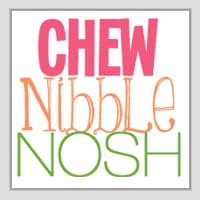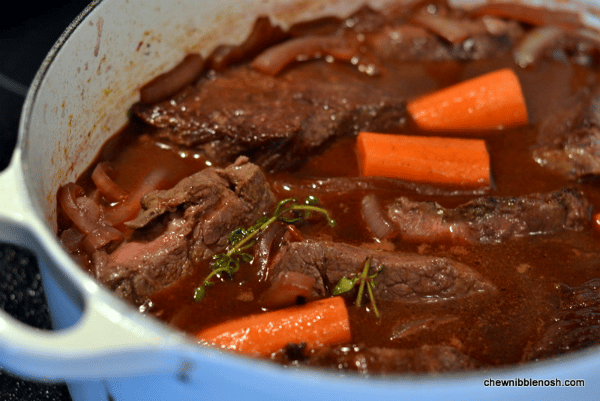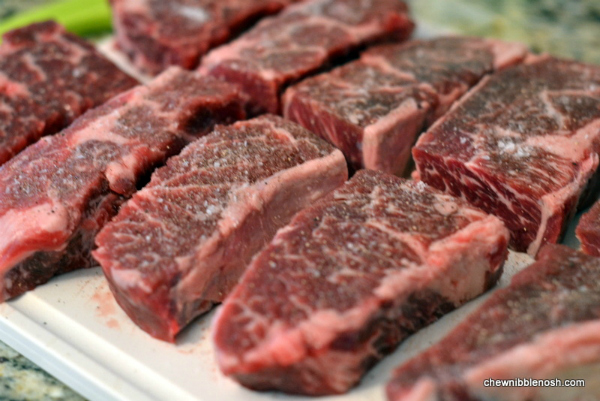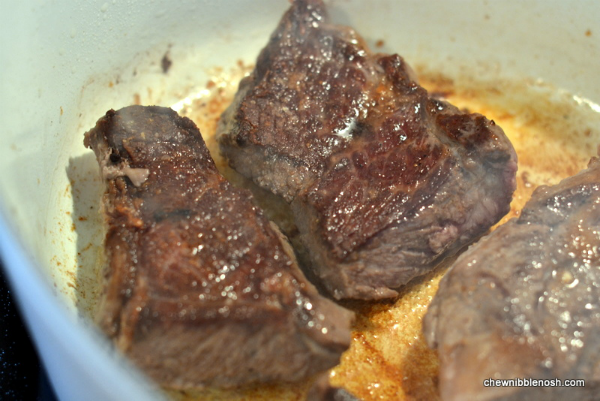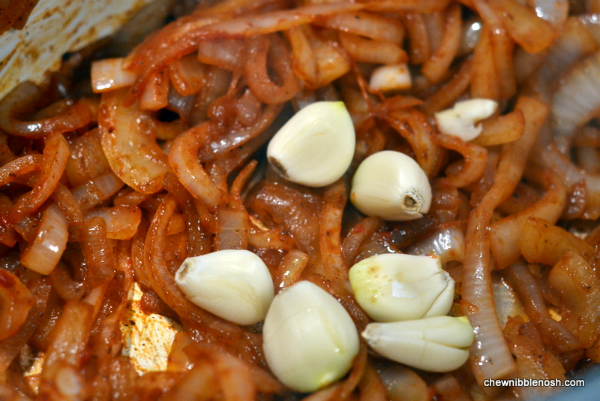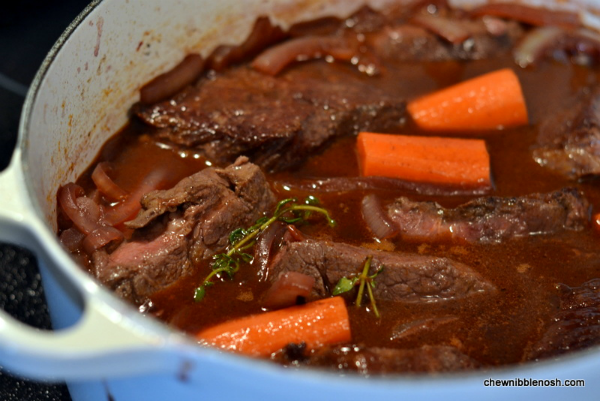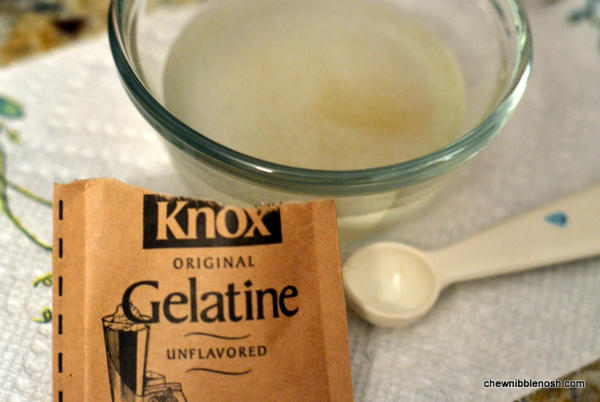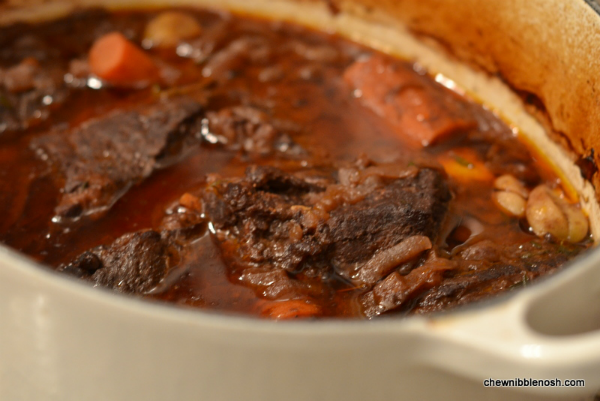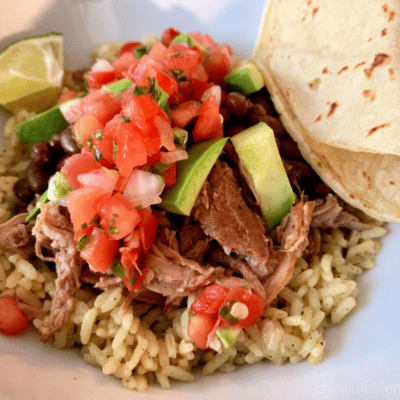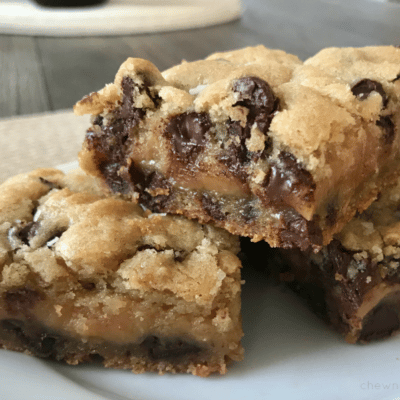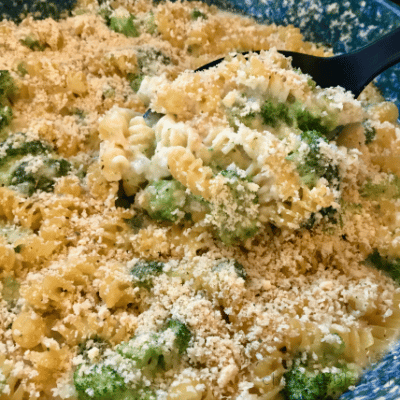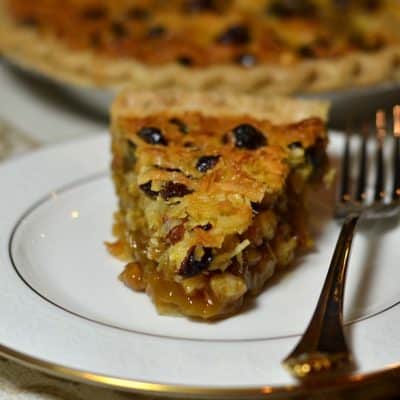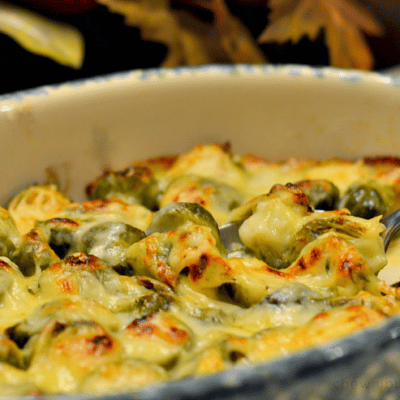Directions
I love, love, love short ribs. If we’re out to dinner and short ribs are on the menu, you can pretty much guarantee that I’m going to order them. I like to make them, at least once, during the colder months. They’re a perfect hearty meal for a chilly winter night.
This year, however, every time I looked for short ribs in the grocery store, they seemed outrageously expensive. I was at Costco, and noticed that they had beautiful, boneless short ribs at a fraction of the bone-in-grocery-store price.
Having never made boneless short ribs before, I was intrigued, so I grabbed some and brought them home, eager to make them for Sunday dinner.
Then came the, “OK, so what do I do with boneless short ribs?” question. I looked online, and after finding loads of stew and goulash-type recipes, I happened across a braised boneless short rib recipe from America’s Test Kitchen. If you’re an avid reader of this blog, you know how much I trust them. Braised short ribs are my favorite way to enjoy the bone-in variety, so I figured I’d give this one a go.
So, armed with my tried and true recipe (according to the ATK team) and my discounted short ribs, I started dinner.
I cut each of the (very long) short ribs in half and seasoned them well with salt and pepper, before searing them, in batches, in a screaming hot pan on the stove.
I set the meat aside, lowered the screaming heat a bit, and added a mess of sliced onions to the pot. They cooked down for about ten minutes, and then I stirred in a tablespoon of tomato paste (Look for the tomato paste in a tube for recipes like this! It keeps indefinitely in your fridge and is available anywhere!), and a few cloves of garlic.
Once the garlic was fragrant, I poured in two cups of red wine and let the mixture simmer until the wine was reduced by half. Then, I finally added my beef back to the pot, along with some beef broth, a few carrots (I should have added more carrots. They were really good. When you make this, add more carrots.), some fresh thyme and a bay leaf.
I brought the mixture to a simmer, popped the lid on the pot, and placed it in a 300* oven, where it cooked, low and slow, for almost two-and-a-half hours.
(This is why short ribs are a Sunday dinner for us.)
When the ribs were just about done braising, I mixed together a bit of unflavored gelatin with some water.
This gelatin, according to the ATK folks, adds a richness, or “suppleness”, to the sauce. If you’re cooking bone-in short ribs, you wouldn’t need this, because the bones would do exactly what the gelatin does. Since these were boneless ribs, we needed a little help in the “supple” department.
After two and a half hours, the beef was so tender, that a fork easily pierced the meat and came right back out.
I removed the meat and the carrots from the pot, tented them with foil to keep it all warm, and got to work on the sauce. I poured the cooking liquid and vegetables through a fine-mesh strainer and into a bowl.
I let the fat rise to the top, skimmed it off, and then returned the liquid to my original pot. I brought the sauce to a boil, let it reduce for about ten minutes, and then stirred in my gelatin-water mixture.
And then, we were ready to eat.
I served the short ribs over Parmesan mashed potatoes, alongside those wonderful carrots (that I should have made more of). The boneless ribs were just as flavorful and delicious as any bone-in rib I’ve made before, and they didn’t give off nearly the amount of fat that the bone in ribs do, which makes me feel like this was a slightly healthier version to go with!
I’m heading back to Costco later this week. I should probably grab some more ribs while I’m there.
BRAISED BEEF SHORT RIBS
Adapted from America’s Test Kitchen
Braised Beef Short Ribs
- 3 1/2 lbs. boneless short ribs, trimmed of excess fat
- kosher salt and pepper
- 2 Tbsp. vegetable oil
- 2 large onions, peeled, halved and sliced
- 1 Tbsp. tomato paste
- 6 cloves garlic, peeled but kept whole
- 2 cups red wine (I used a Cabernet Sauvignon)
- 1 cup beef broth
- 4 large carrots (or more), peeled and cut into 3 inch chunks
- 4 sprigs fresh thyme
- 1 bay leaf
- 1/4 cup cold water
- 1/2 tsp. unflavored powdered gelatin
- Adjust the oven rack to the lower-middle position and heat your oven to 300*F.
- Pat the beef dry with paper towels and sprinkle, generously, with 2 teaspoons salt and 1 teaspoon pepper. Heat 1 Tablespoon of the oil in a large heavy Dutch oven or pot over medium-high heat until the oil is smoking. Add half of the beef and cook, without moving the meat, for 4-6 minutes. Turn the beef over and continue to cook on the second side until well browned, another 4-6 minutes. Transfer the beef to a plate and set aside. Repeat with remaining oil and meat.
- Reduce the heat to medium and add the sliced onions to the pot. Cook, stirring occasionally, until the onions are soft and cooked down substantially, about 12-15 minutes. (If the onions begin to darken too quickly, add 1 to 2 tablespoons water to the pan.)
- Add the tomato paste to the onions, stir continuously, and cook until the paste browns a bit, about 2 minutes.
- Add the garlic, and stir until it’s aromatic, about 30 seconds.
- Increase the heat to medium-high, add the wine, and simmer, scraping the browned bits from the bottom of the pan, until the wine is reduced by half, about 8-10 minutes.
- Add the broth, carrots, thyme, and bay leaf. Add the beef and any accumulated juices to the pot. Cover, and bring to a simmer.
- Transfer the pot to the oven and cook, using tongs to turn the meat twice during cooking, until a fork slips easily in and out of the meat, about 2 to 2 1/2 hours.
- Place the water in a small bowl and sprinkle the gelatin on top. Let it stand for at least 5 minutes.
- Using tongs, remove the meat and carrots from the liquid to a serving platter and tent with foil to keep warm.
- Strain the cooking liquid through a mesh strainer into a bowl. Press on the solids to extract all of the liquid. Allow the liquid to settle for a few minutes, allowing the fat to rise to the top. Skim off the fat, and add the liquid back to the cooking pot.
- Bring to a simmer over medium heat, and reduce the liquid down to 1 cup, about 5 to 10 minutes.
- Remove from the heat and stir in the gelatin mixture. Season with salt and pepper.
- Pour the sauce over the meat and serve.
- ENJOY!


